The next generation of UiPath Process Mining: Enhancements that make a difference

Process mining has become a crucial tool for businesses looking to optimize their operations and increase efficiency. By analyzing data from various systems, process mining provides a clear view of how processes are executed, allowing companies to identify bottlenecks, inefficiencies, and opportunities for improvement. Process mining is important for companies looking to stay ahead of the curve and thrive in a rapidly changing business environment.
In November 2021, UiPath launched a brand-new, cloud first Process Mining product that’s integrated in the UiPath Business Automation Platform. The product is also secure by default and scalable.
The change made it even easier for UiPath customers to use Process Mining seamlessly with all the other tools and technologies that the UiPath Platform offers. With the latest product release, 2023.4, now is the perfect time for UiPath customers to migrate from standalone UiPath Process Mining and take advantage of the benefits that come with the UiPath Platform. In the following discussion, we’ll delve into the reasons why migrating to the latest version of UiPath Process Mining makes it even easier for businesses to streamline their processes and increase efficiency.
Choosing the right Process Mining deployment: UiPath Automation Cloud or UiPath Automation Suite?
Previously, UiPath Process Mining was available as a standalone option, deployable either on-premises or in a private cloud. Now, users have the flexibility to deploy Process Mining in Automation Cloud™ or Automation Suite. Automation Cloud instantly delivers the full UiPath Platform in under a minute, from any of six regions around the world. Automation Suite is the UiPath Platform delivered as a single, containerized suite, deployed on-premises or to a private cloud hosted by any of the major cloud providers.
This new Process Mining deployment flexibility allows users to choose the option that best suits their needs, whether they prefer an installation-free solution or want greater control over their deployments. Users can take advantage of new features and improvements with both delivery options, thereby optimizing their Process Mining capabilities.
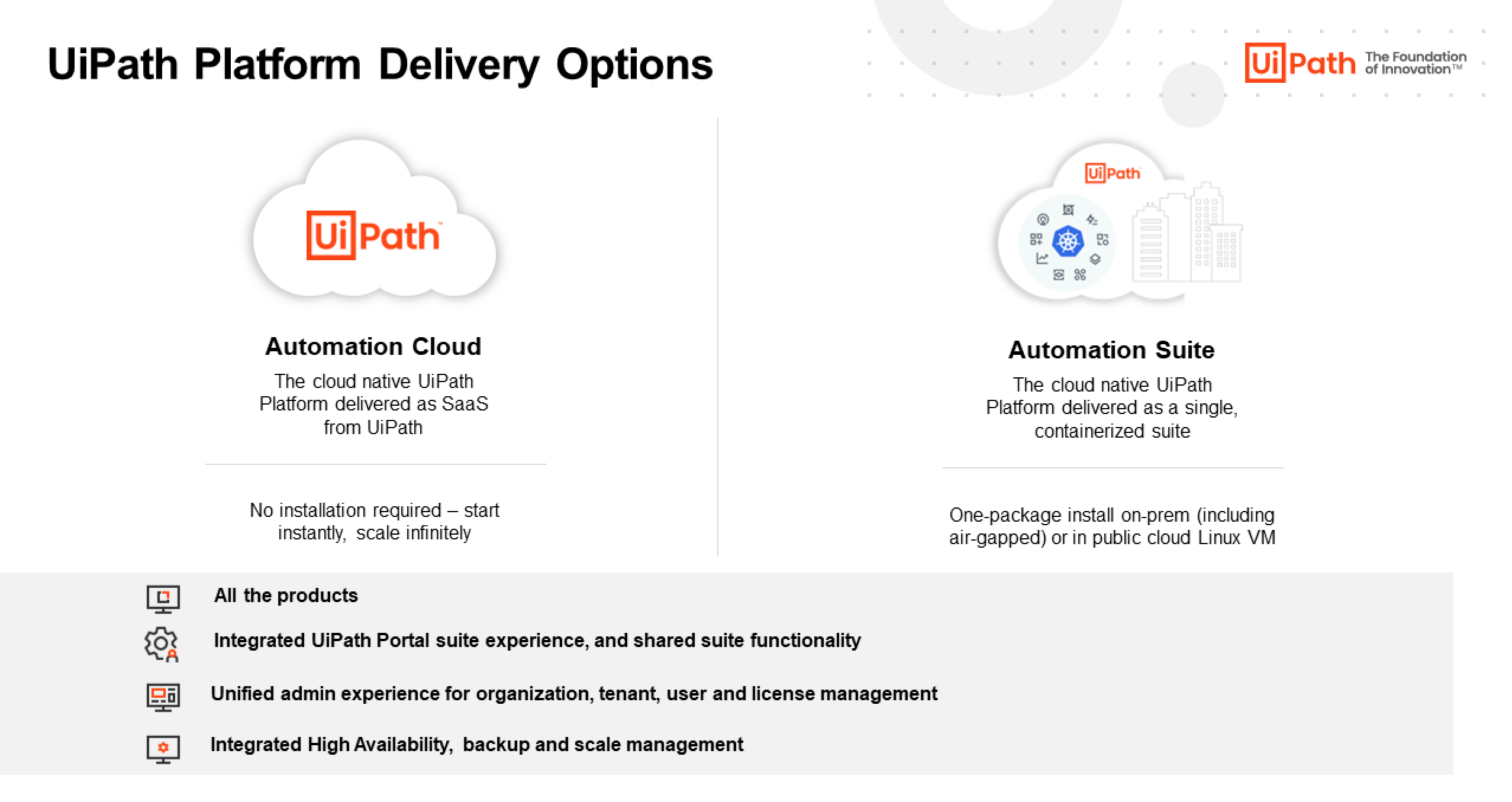
Performance and scalability
Performance and scalability were two of the biggest challenges for customers using the standalone version of UiPath Process Mining. Although users could identify value and benefits with smaller datasets, the tool struggled to handle larger data volumes. However, UiPath has addressed this issue by prioritizing performance and scalability. With the newly improved UiPath Process Mining (available via the UiPath Platform), customers can use their Process Mining instance to ingest millions of rows of data without any impact on performance or the need to share their data.
For Automation Cloud, UiPath is currently testing and supporting performance with more than one billion rows of data per app. For Automation Suite, we support 200 million rows of data. The results (shown in the image below) are truly impressive and clearly demonstrate significant improvements in performance and scalability compared to the standalone version.
Customers who choose to migrate to Automation Cloud or Automation Suite can expect numerous performance and scale benefits, including faster data ingestion, quicker data refresh times, and support for incremental ingestion. These enhancements improve the efficiency and effectiveness of Process Mining, allowing users to uncover insights faster and with greater accuracy.
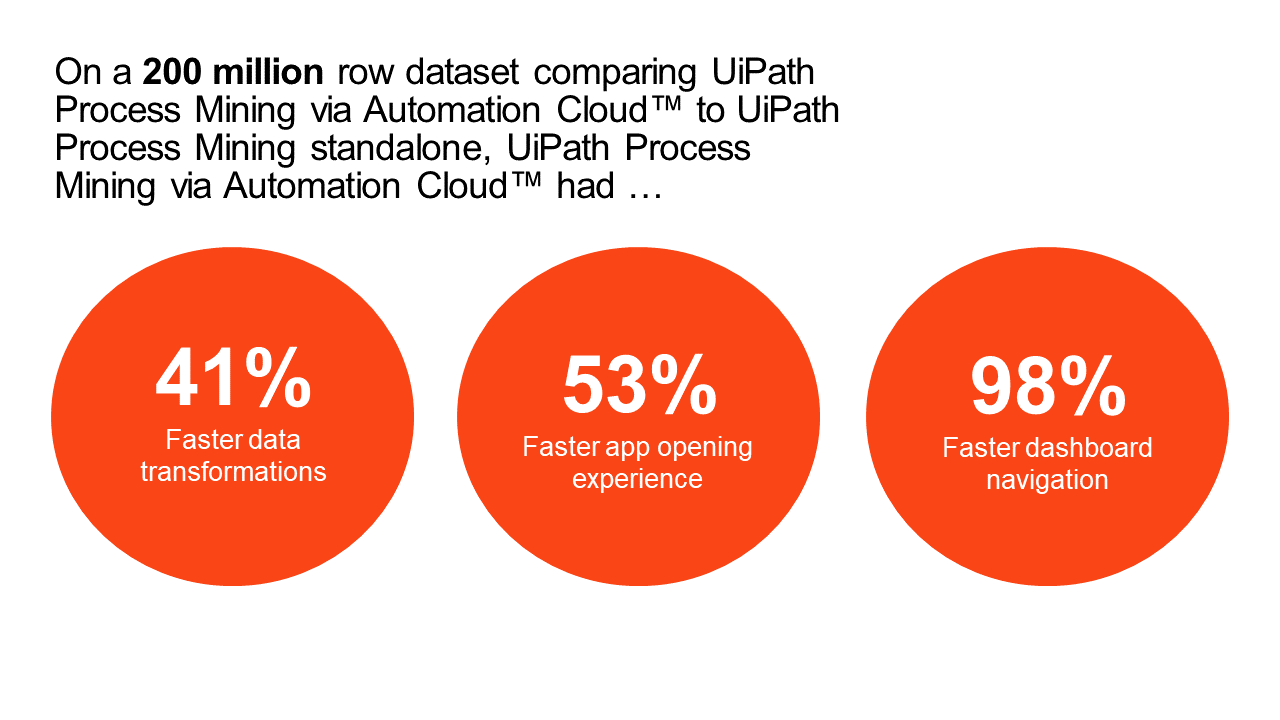
Security
Automation Cloud™ and Automation Suite enable multi-tenancy; each organization can create their own tenant in a specified geography for fully segregated data. Additionally, Process Mining now features role-based access control (RBAC) capabilities, allowing for granular control over user and group access to process apps. Depending on their permissions, users can edit, view, delete, or manage access for specific process apps. Furthermore, admins can set data restrictions at the process app level via edit permissions.
With data restrictions, different levels of access controls can be configured to hide specific data fields or records entirely from certain users. For instance, flagging sensitive information and restricting certain fields for a set of users will, in turn, hide corresponding charts and dashboards, while simultaneously notifying users they don't have access to that information. Additionally, record access policies based on filters can be established to further limit data access from specified groups.
Faster time-to-value and ease of use
Process mining tools often face challenges in data extraction, transformation, and loading. UiPath Process Mining reduces development time by leveraging SQL connectors. This feature enables SQL users to understand and transform their data without the need to learn a new custom scripting language.
Additionally, UiPath Process Mining provides more than 30 out-of-the-box connectors to key line-of-business systems such as SAP, Oracle, Salesforce, and ServiceNow, speeding up time to value.
After data ingestion, UiPath Process Mining offers various out-of-the-box dashboards, including end-to-end process diagrams, event analysis, due dates, tags, root cause analysis, automation potential, and compare. These dashboards cater to different types of users, including process analysts and people who use automations. The automation potential dashboard includes simulation capabilities that estimate an activity's automation potential and its impact on the process in terms of time, cost, and full-time equivalent (FTE) savings.
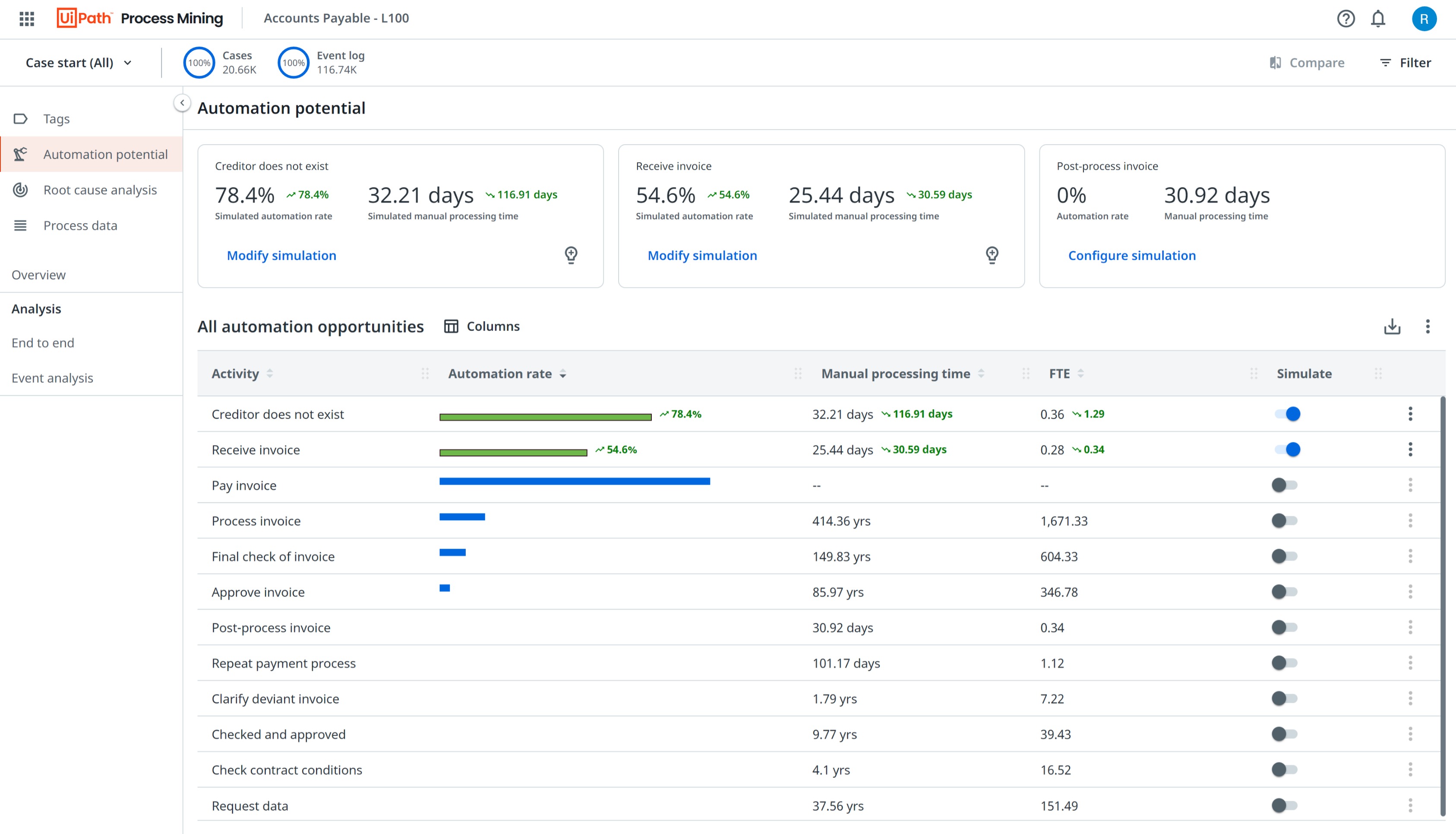
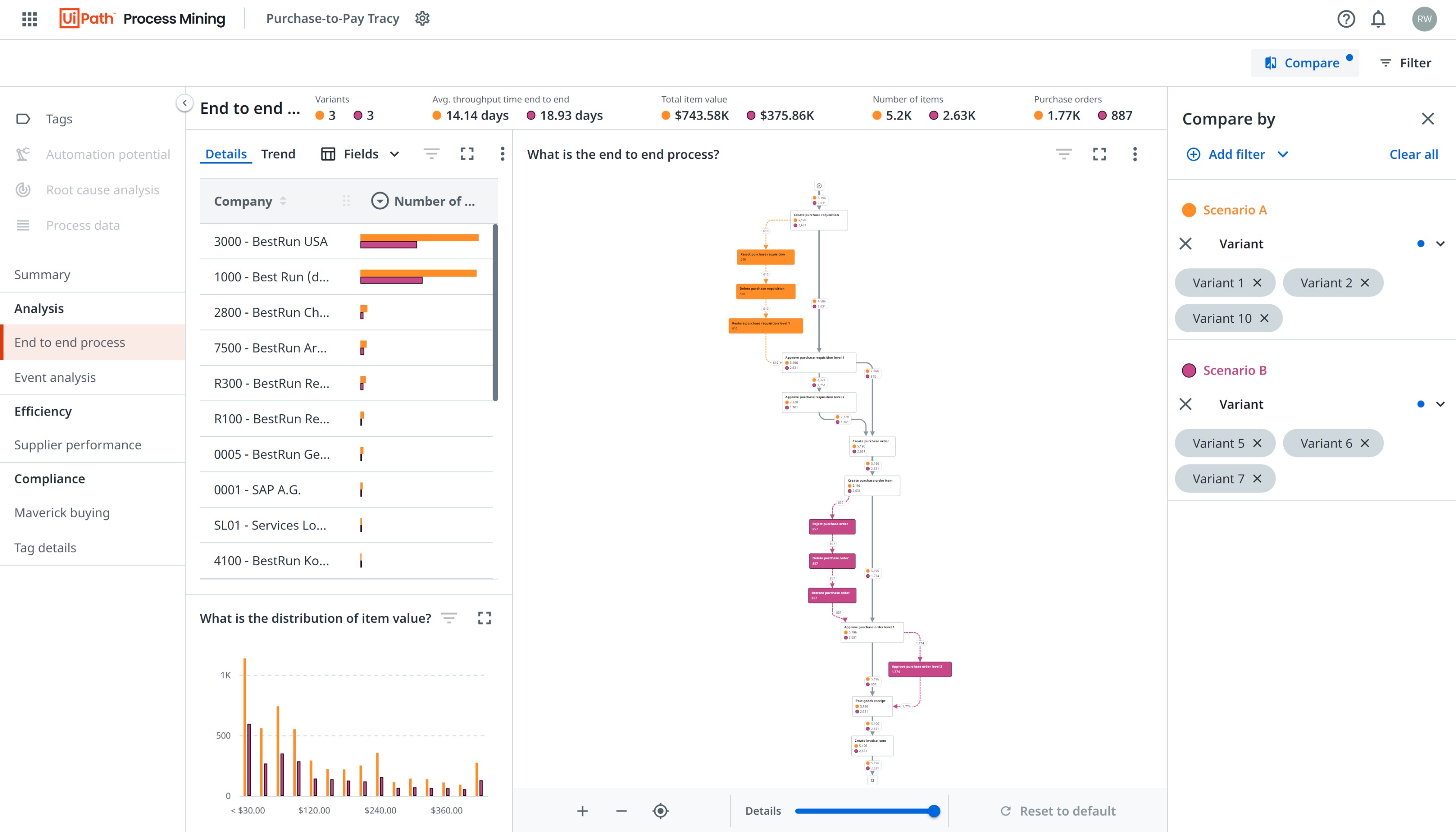
In addition to the out-of-the-box dashboards, analysts now have the flexibility to build their own custom dashboards with ease, using a low- or no-code approach. Previously, customization was limited and required process mining developers to create dashboards for analysts and business users. However, the newly updated Process Mining tool puts the power of dashboard creation in analysts’ hands, empowering analysts to build solutions that truly align with their unique business needs and goals.
UiPath Business Automation Platform integration
As Process Mining joins the suite of UiPath services, users can expect to enjoy seamless integration capabilities with the UiPath Platform.
Process Mining is already integrated with Automation Hub, allowing users to scale their process improvement and automation pipeline by submitting ideas directly to Automation Hub. All ideas are centrally captured, managed, and prioritized conveniently in Automation Hub.
With the release of automation triggering in version 2023.4, analysts can now configure Orchestrator queues with Process Mining, enabling business users to send cases and data directly to robots to perform a workflow. This includes anything from sending an alert to updating a purchase order in SAP.
Furthermore, task mining has become a hot topic in the market, and UiPath users can now create Task Mining projects from Process Mining. If users identify a bottleneck or inefficiency and want to understand the cause at a desktop level, they can easily create a Task Mining project.
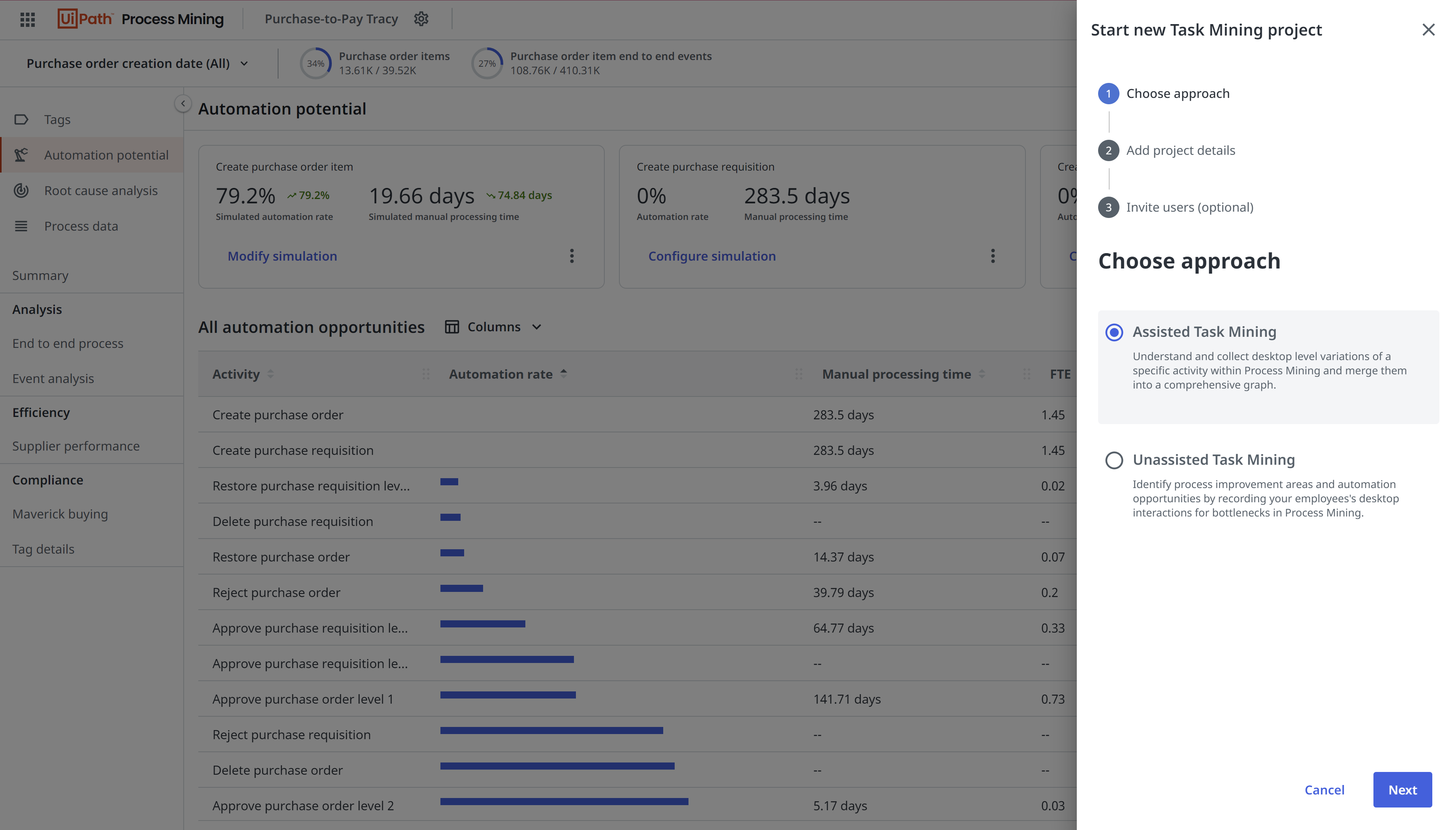
So, why wait? Migrate to Process Mining and reap the benefits today
Now that we've highlighted the key benefits of the new Process Mining product, it's your turn to decide if migrating to the new UiPath Process Mining is the right choice for your organization. We're confident that the enhanced capabilities and improved user experience will enable faster time to value, and greater control over data and dashboards. Not to mention a more enjoyable analysis experience for developers, analysts, and business users alike.
If you're interested in learning more about the migration process, please don't hesitate to reach out to your UiPath account executive. We'd be delighted to discuss where you are currently in your Process Mining journey and support your goals.

Senior Product Manager, UiPath
Get articles from automation experts in your inbox
SubscribeGet articles from automation experts in your inbox
Sign up today and we'll email you the newest articles every week.
Thank you for subscribing!
Thank you for subscribing! Each week, we'll send the best automation blog posts straight to your inbox.



